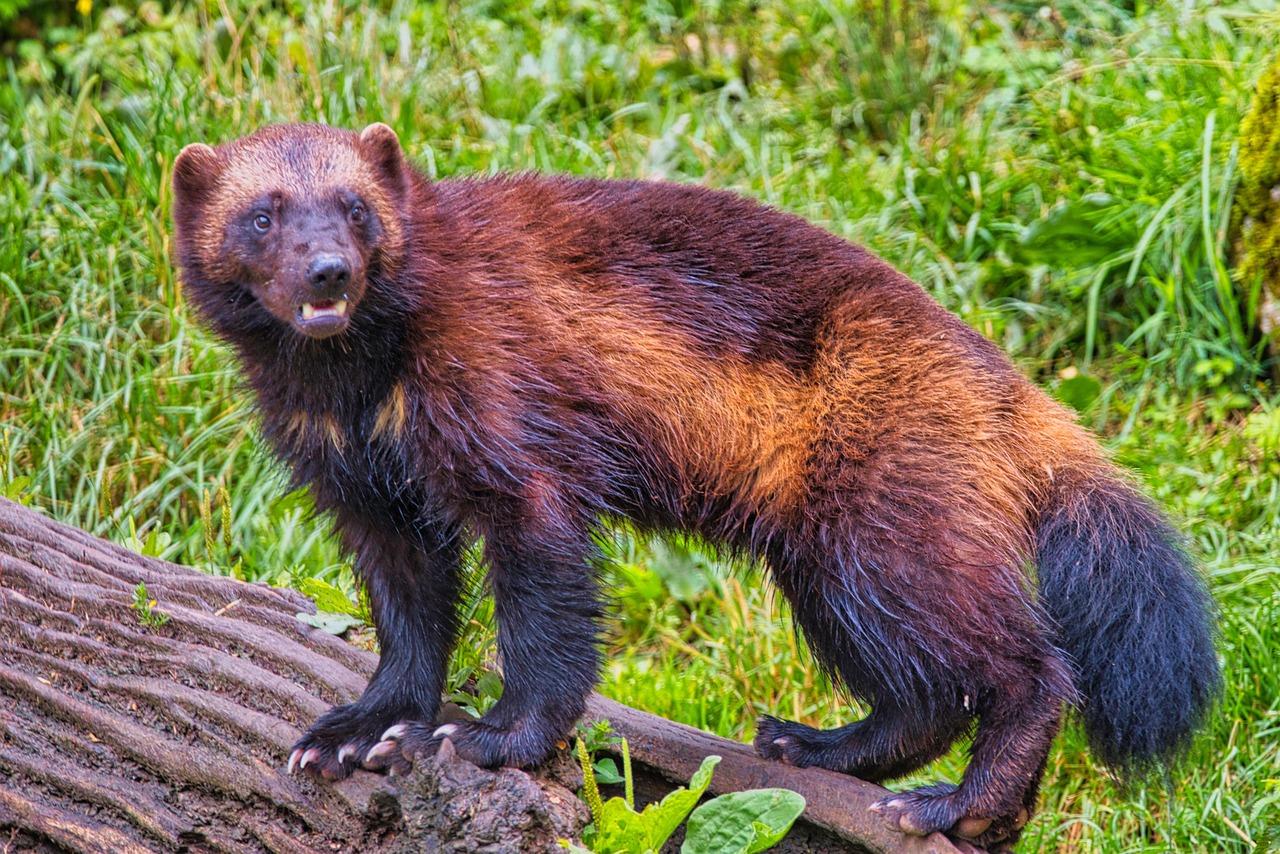Wolverine (Järv)

Characteristics:
The wolverine is a powerfully built member of the weasel family, roughly in size between a fox and a badger. Body length 65–105 cm, tail 15–25 cm, and weight 8–20 kg (males are significantly larger than females). The fur is dark brown to blackish, with a lighter yellow-brown band running along each side of the body. It has a broad head, short but strong legs, and a bushy tail. Its large paws act like snowshoes, allowing it to move easily over deep snow.
Habitat:
In Sweden, wolverines are found mainly in mountain and forest regions of the north, with the largest populations in Norrbotten, Västerbotten, and Jämtland. They prefer rugged, remote terrain with access to carrion and prey species such as reindeer and hare.
Behaviour:
The wolverine is solitary and highly mobile — it can travel several tens of kilometres per day in search of food. It is active year-round and does not hibernate. Known for its strength, endurance, and cunning, the wolverine can kill prey larger than itself, such as reindeer calves. It often follows predators like wolves and lynx to feed on leftover carcasses.
Diet:
The wolverine is primarily carnivorous and scavenging. It eats reindeer, moose, small mammals, hares, birds, and berries, but relies heavily on carrion during winter. Food is often cached under snow, moss, or rocks for later use.
Reproduction:
Mating occurs in summer (June–August), but the wolverine exhibits delayed implantation (diapause). The female gives birth to 1–4 kits in February–March, usually in a snow den or under boulders. The kits are white at birth and begin accompanying their mother on hunts after a few months.
Tracks and signs:
- Tracks: Five toes with claw marks; prints 8–12 cm wide. Step length 50–80 cm. In snow, they often appear as “three-in-a-row” patterns.
- Droppings (scat): Dark, often spiral-shaped and containing hair, bone, or feathers.
- Caches: Carcasses or remains covered with snow, moss, or soil.
- Den: Built under snowdrifts, rock piles, or in mountain terrain.
Distribution:
The wolverine occurs throughout the northern boreal and arctic regions of the Northern Hemisphere. In Sweden, the population is estimated at around 1,000 individuals, most of which live in the Scandinavian mountain range. The species is protected, but protective hunting may be allowed to prevent livestock depredation.
Hunting:
Wolverines are normally protected, but protective hunts may be authorised by county administrative boards when damage to reindeer or livestock is confirmed. Hunting is challenging, as the species is elusive, solitary, and mostly nocturnal. Common methods include tracking in snow or waiting near carcasses.
Firearm class (Sweden):
Hunting wolverine requires a class 1-2 rifle.
Think for the hunting exam:
- Solitary and active year-round.
- Lives in northern mountain and forest regions.
- Has delayed implantation (diapause).
- Feeds mainly on carrion, but also small animals and berries.
- Tracks: five toes, often three-in-a-row pattern in snow.
- Protected species — may be hunted only under protective licence.
- Hunted with class 1-2 rifle.
